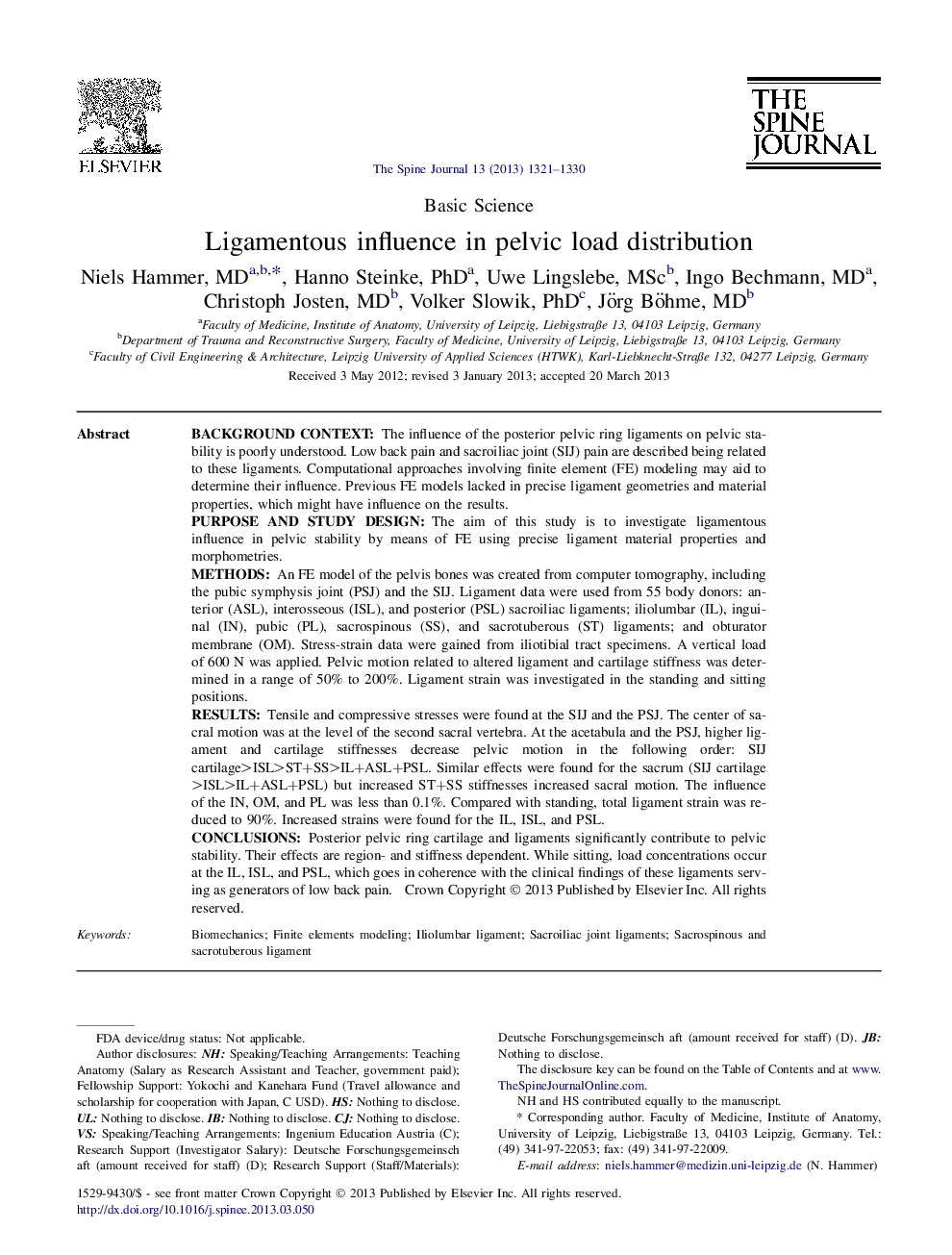| کد مقاله | کد نشریه | سال انتشار | مقاله انگلیسی | نسخه تمام متن |
|---|---|---|---|---|
| 4096594 | 1268567 | 2013 | 10 صفحه PDF | دانلود رایگان |

Background contextThe influence of the posterior pelvic ring ligaments on pelvic stability is poorly understood. Low back pain and sacroiliac joint (SIJ) pain are described being related to these ligaments. Computational approaches involving finite element (FE) modeling may aid to determine their influence. Previous FE models lacked in precise ligament geometries and material properties, which might have influence on the results.Purpose and study designThe aim of this study is to investigate ligamentous influence in pelvic stability by means of FE using precise ligament material properties and morphometries.MethodsAn FE model of the pelvis bones was created from computer tomography, including the pubic symphysis joint (PSJ) and the SIJ. Ligament data were used from 55 body donors: anterior (ASL), interosseous (ISL), and posterior (PSL) sacroiliac ligaments; iliolumbar (IL), inguinal (IN), pubic (PL), sacrospinous (SS), and sacrotuberous (ST) ligaments; and obturator membrane (OM). Stress-strain data were gained from iliotibial tract specimens. A vertical load of 600 N was applied. Pelvic motion related to altered ligament and cartilage stiffness was determined in a range of 50% to 200%. Ligament strain was investigated in the standing and sitting positions.ResultsTensile and compressive stresses were found at the SIJ and the PSJ. The center of sacral motion was at the level of the second sacral vertebra. At the acetabula and the PSJ, higher ligament and cartilage stiffnesses decrease pelvic motion in the following order: SIJ cartilage>ISL>ST+SS>IL+ASL+PSL. Similar effects were found for the sacrum (SIJ cartilage>ISL>IL+ASL+PSL) but increased ST+SS stiffnesses increased sacral motion. The influence of the IN, OM, and PL was less than 0.1%. Compared with standing, total ligament strain was reduced to 90%. Increased strains were found for the IL, ISL, and PSL.ConclusionsPosterior pelvic ring cartilage and ligaments significantly contribute to pelvic stability. Their effects are region- and stiffness dependent. While sitting, load concentrations occur at the IL, ISL, and PSL, which goes in coherence with the clinical findings of these ligaments serving as generators of low back pain.
Journal: The Spine Journal - Volume 13, Issue 10, October 2013, Pages 1321–1330